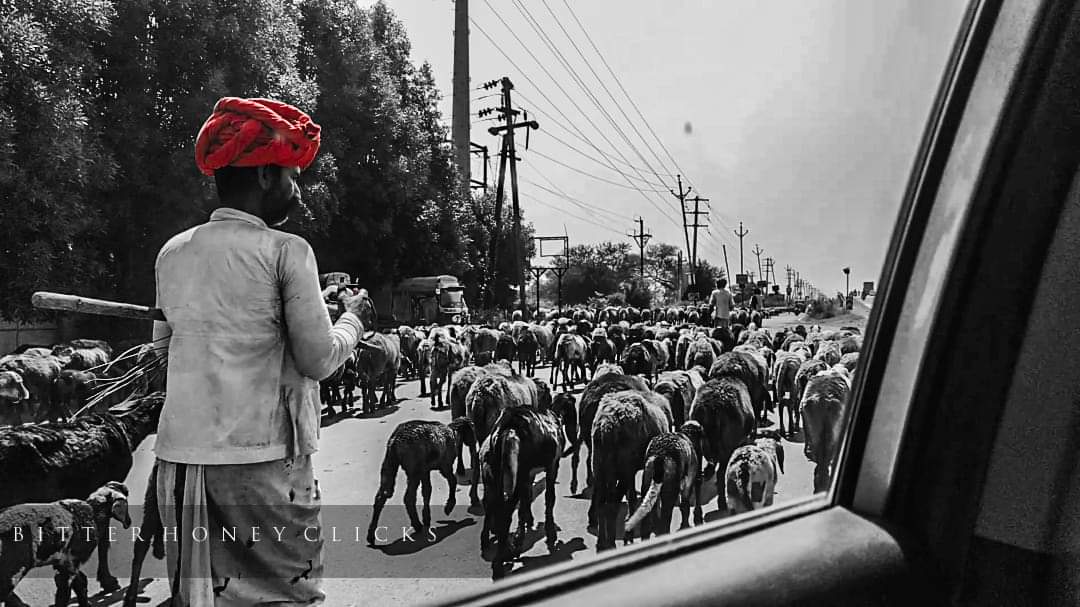5.1-Pastoral Nomads and their Movements
5.1-Pastoral Nomads and their Movements Important Formulae
You are currently studying
Grade 9 → History → Pastoralists in the Modern World → 5.1-Pastoral Nomads and their Movements
- Examine the situations that have created nomadic societies highlighting the key factor played by the climatic conditions and topography.
5.1 Pastoral Nomads and their Movements
- Pastoral nomads are people who move with their herds to find pasture and water.
- They usually travel in fixed routes and have a seasonal migration pattern.
- Movements are influenced by climate, water availability, and pasture growth.
- In ancient times, nomads helped in spreading culture, technology, and trade.
- Some well-known nomadic groups include the Bedouins of Arabia and the Mongols of Central Asia.
- Nomadic life is often misunderstood due to its mobility and lack of permanent settlement.
- Their movements also reflect the struggle for survival and adaptation to the environment.
Introduction
Pastoral nomadism is a form of agriculture based on the herding of animals and the seasonal movement of communities in search of grazing grounds. This lifestyle has been integral to the culture and economy of various regions across the globe.
1. Definition of Pastoral Nomadism
Pastoral nomadism is characterized by:
- Herding Animals: Communities primarily depend on domesticated animals for their livelihood.
- Seasonal Movement: Nomads move in search of pastures and water, adapting to climatic and environmental changes.
2. Types of Pastoral Nomads
There are various types of pastoral nomads, including:
- Shepherds: Herds of sheep or goats are managed, often found in mountainous regions.
- Cattle Herders: Communities that focus on cattle, common in grasslands and savannas.
- Reindeer Herders: Indigenous groups in Arctic regions rely on reindeer for food, clothing, and transportation.
3. Reasons for Nomadic Lifestyle
Pastoral nomadism arises due to several factors:
- Environmental Conditions: Arid and semi-arid regions with limited rainfall make agriculture difficult, prompting a nomadic lifestyle.
- Animal Husbandry: The need for adequate grazing land for livestock drives communities to move regularly.
4. Movement Patterns
Pastoral nomads typically follow established movement patterns:
- Seasonal Migration: Movements are often dictated by seasonal changes, such as summer and winter grazing.
- Transhumance: Some communities practice transhumance, moving livestock between fixed summer and winter pastures.
5. Economic Activities
The economy of pastoral nomads is multifaceted:
- Animal Products: Nomads rely on livestock for milk, meat, wool, and hides, which are essential for their sustenance and trade.
- Trade: Surplus animal products may be traded with settled agricultural communities for grains, tools, and other goods.
6. Social Structure
Pastoral nomadic societies often have distinct social structures:
- Tribal Organization: Communities are usually organized into tribes or clans, with strong kinship ties.
- Leadership: Leadership is often based on age, experience, and ability to manage herds and navigate landscapes.
7. Cultural Practices
Pastoral nomads maintain unique cultural practices:
- Rituals and Festivals: Cultural traditions, rituals, and festivals often revolve around livestock and seasonal changes.
- Storytelling and Oral Traditions: Oral traditions play a vital role in preserving history, customs, and knowledge about the environment.
8. Challenges Faced
Pastoral nomads face numerous challenges, including:
- Climate Change: Changes in climate patterns affect grazing lands and water sources, threatening their livelihoods.
- Land Encroachment: Expansion of agriculture and urbanization often leads to loss of traditional grazing lands.
9. Modern Developments
In contemporary times, pastoral nomadism is evolving:
- Integration with Settled Communities: Some nomadic groups are integrating with sedentary populations, leading to changes in lifestyle and economy.
- Government Policies: Various governments are implementing policies to support pastoral communities while balancing environmental concerns.

Bitter Honey Clicks, CC BY-SA 4.0, via Wikimedia Commons
5.1- Pastoral Nomads and their Movements
पारंपरिक पशुपालन में, पशु चराने वाले समुदायों को 'पैस्टोरल नोमाड्स' कहा जाता है। ये लोग अपने जीवन यापन के लिए मवेशियों पर निर्भर रहते हैं और अक्सर अपने निवास स्थान को बदलते रहते हैं। इनका जीवन विभिन्न जलवायु और भौगोलिक परिस्थितियों के अनुसार चलता है।
पैस्टोरल नोमाड्स के आंदोलन का मुख्य कारण मौसम और घास की उपलब्धता है। ये लोग अपने पशुओं को चराने के लिए समय-समय पर स्थानांतरित होते हैं। इस प्रक्रिया को 'ट्रांसह्यूमंस' कहा जाता है, जिसमें पशुपालक उच्च पहाड़ियों में गर्मियों में जाते हैं और सर्दियों में निचले क्षेत्रों में लौटते हैं।
पैस्टोरल समुदाय विभिन्न प्रकार के पशुओं का पालन करते हैं, जैसे:
- गाय (Cattle)
- भेड़ (Sheep)
- बकरी (Goat)
- उंट (Camel)
ये पशु इनकी आर्थिक गतिविधियों का मुख्य हिस्सा हैं। इसके अलावा, पैस्टोरल नोमाड्स का पारंपरिक ज्ञान भी महत्वपूर्ण है, जैसे:
- पशुओं की देखभाल
- जल स्रोतों का प्रबंधन
- घास के चरागाहों की पहचान
पैस्टोरल जीवन के विभिन्न रूप होते हैं, जैसे:
- स्थायी पशुपालन: इसमें समुदाय एक निश्चित स्थान पर लंबे समय तक रहते हैं और स्थायी आवास बनाते हैं।
- संवहनीय पशुपालन: यह प्रकार अधिकतर घास के क्षेत्रों में देखा जाता है, जहाँ समुदाय पशुओं को चराने के लिए स्थानांतरित होते हैं।
इनकी यात्रा अक्सर मौसम के अनुसार होती है। उदाहरण के लिए, गर्मियों में ये ऊँचे पर्वतीय क्षेत्रों की ओर जाते हैं, जहाँ जलवायु ठंडी होती है और घास अधिक होती है। सर्दियों में, ये निचले क्षेत्रों में चले जाते हैं, जहाँ तापमान अधिक होता है।
पैस्टोरल समुदायों के आंदोलन का एक और पहलू सामाजिक और आर्थिक संबंधों से संबंधित है। विभिन्न समूह एक दूसरे के साथ व्यापार करते हैं, जैसे:
- दूध और दूध से बने उत्पाद
- कपड़ा
- अन्य कृषि उत्पाद
आधुनिक समय में, पैस्टोरल नोमाड्स को कई चुनौतियों का सामना करना पड़ता है। इनमें प्रमुख हैं:
- जलवायु परिवर्तन: बदलते मौसम पैस्टोरल जीवन को प्रभावित कर रहे हैं।
- भूमि उपयोग परिवर्तन: कृषि और शहरीकरण के कारण चरागाहों की कमी।
- सरकारी नीतियाँ: कुछ स्थानों पर पारंपरिक रिवाजों और आंदोलनों पर रोकथाम।
इन चुनौतियों का सामना करने के लिए, पैस्टोरल नोमाड्स ने नए तरीके अपनाए हैं। इनमें सामुदायिक संगठनों का गठन, पारंपरिक ज्ञान का संरक्षण और स्थानीय सरकारों के साथ सहयोग शामिल है।
